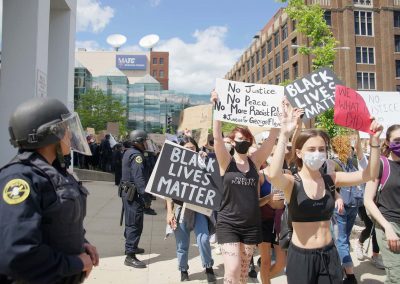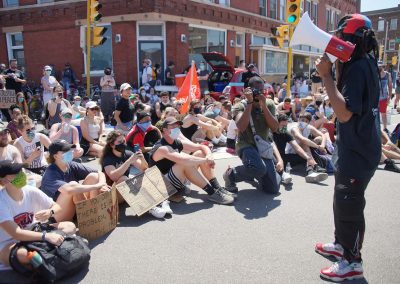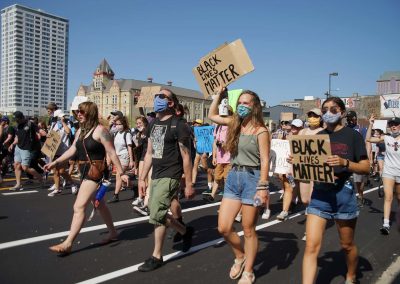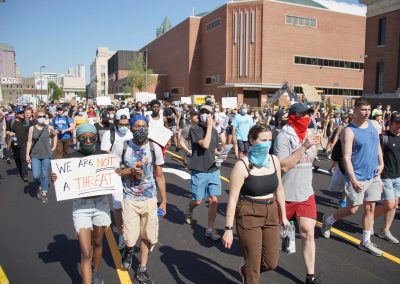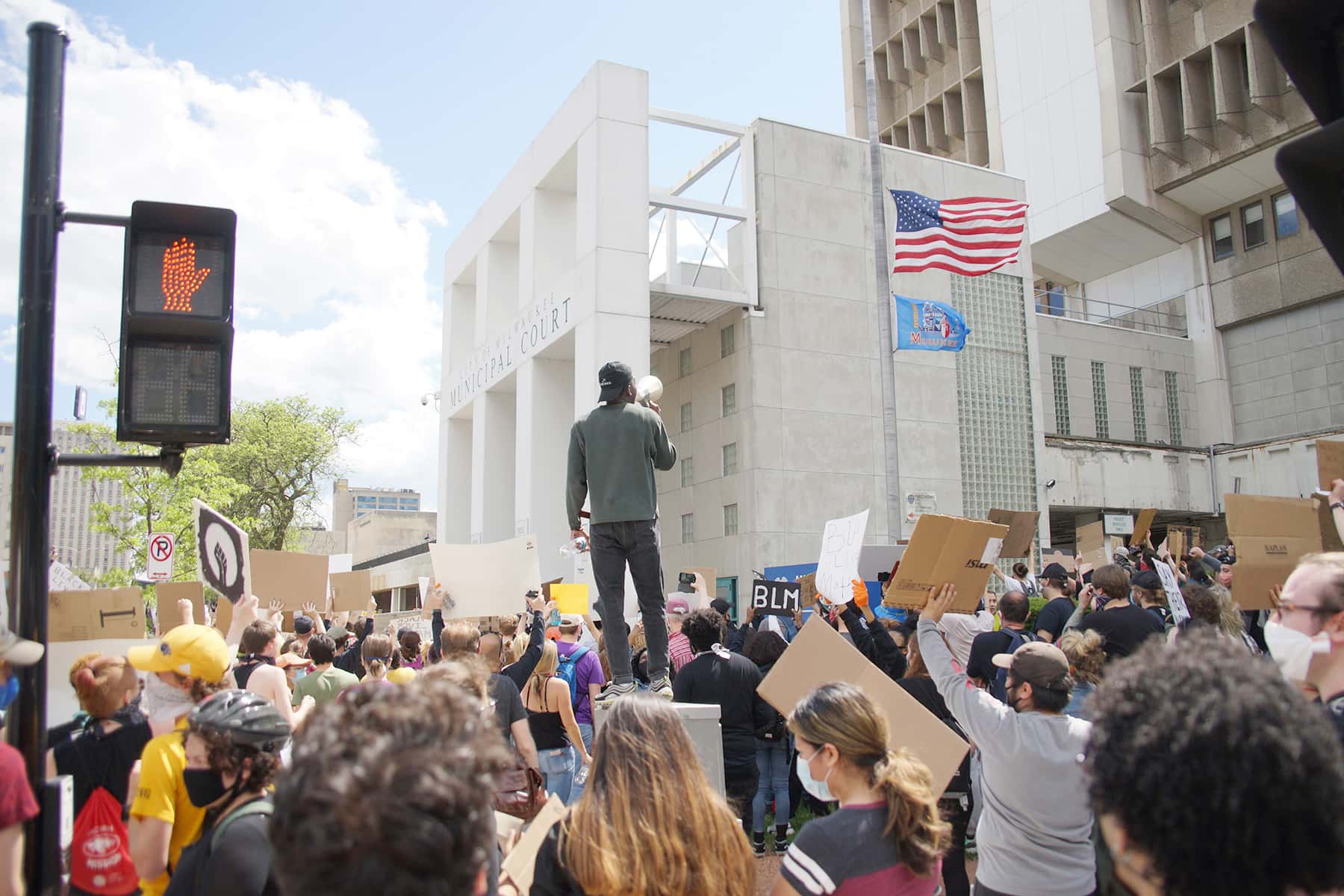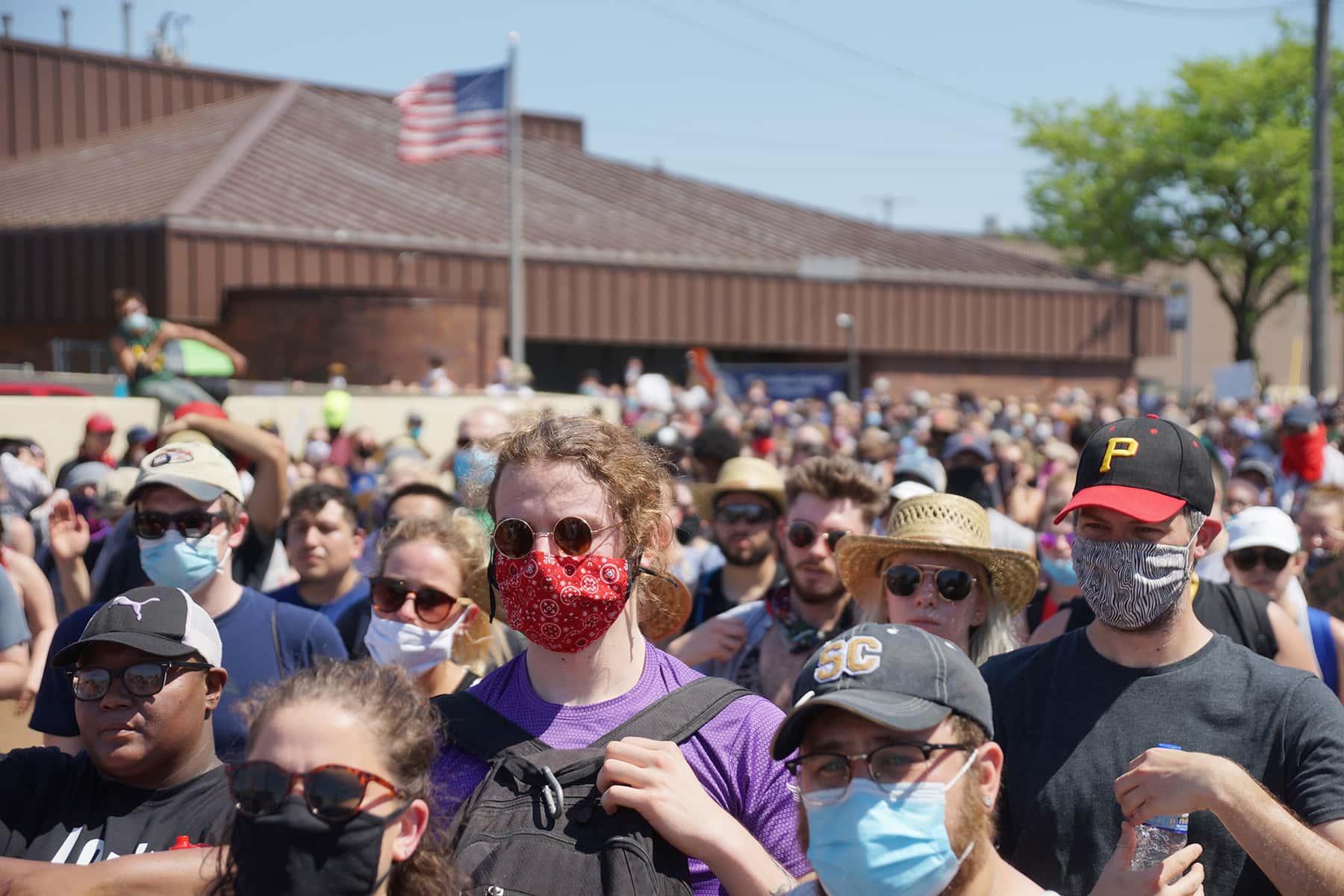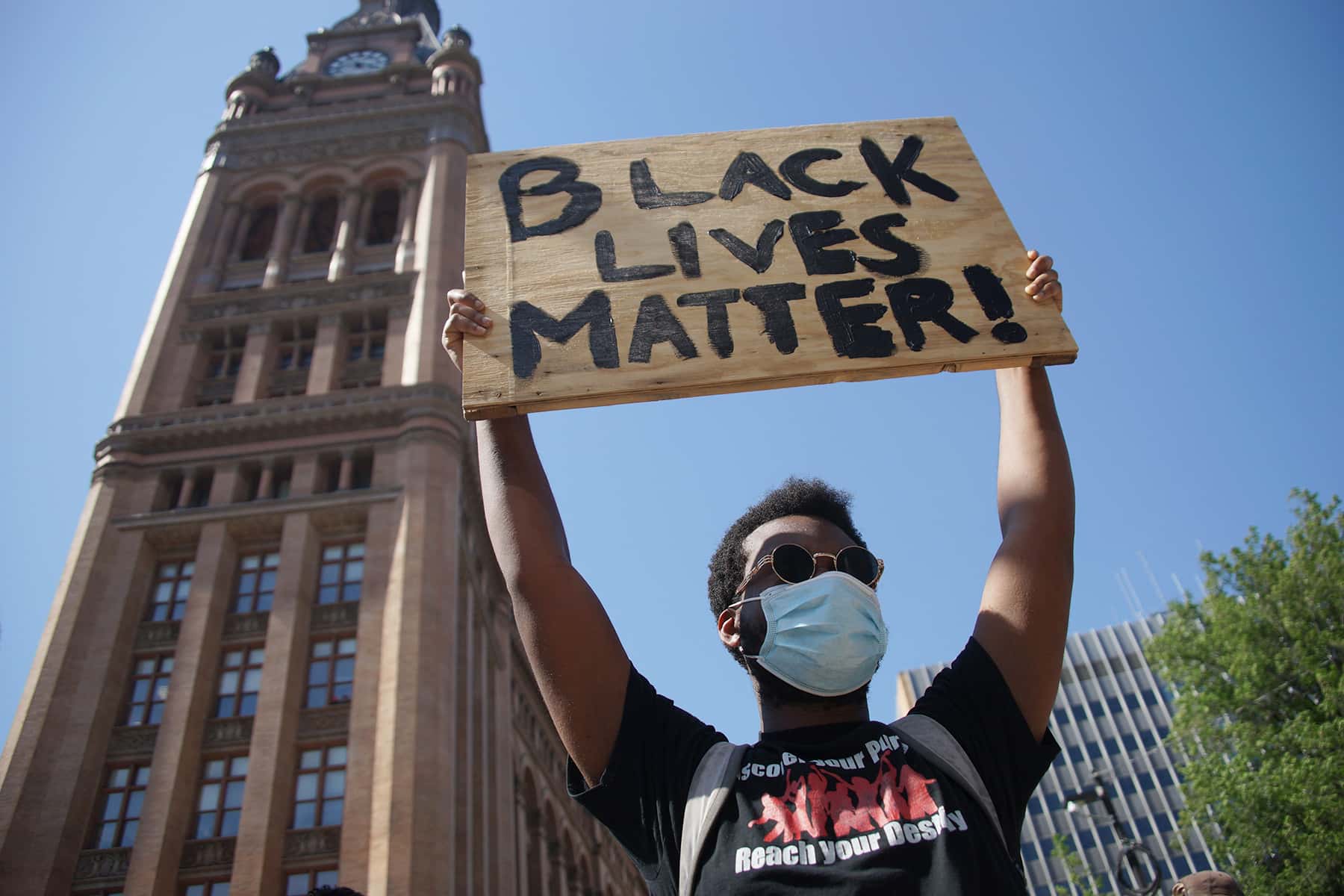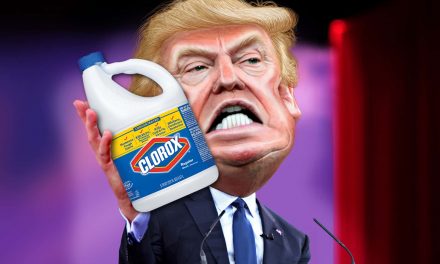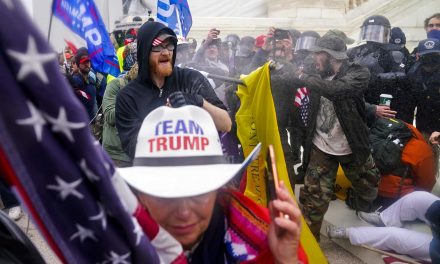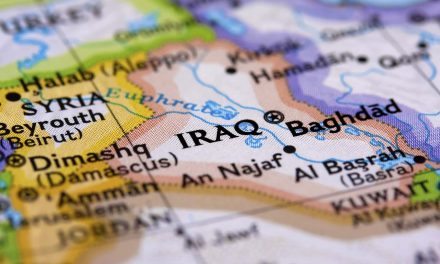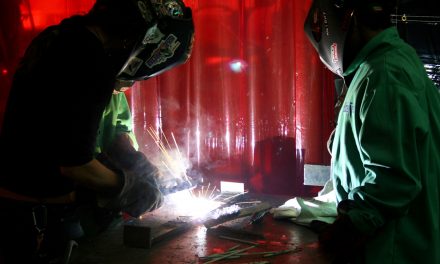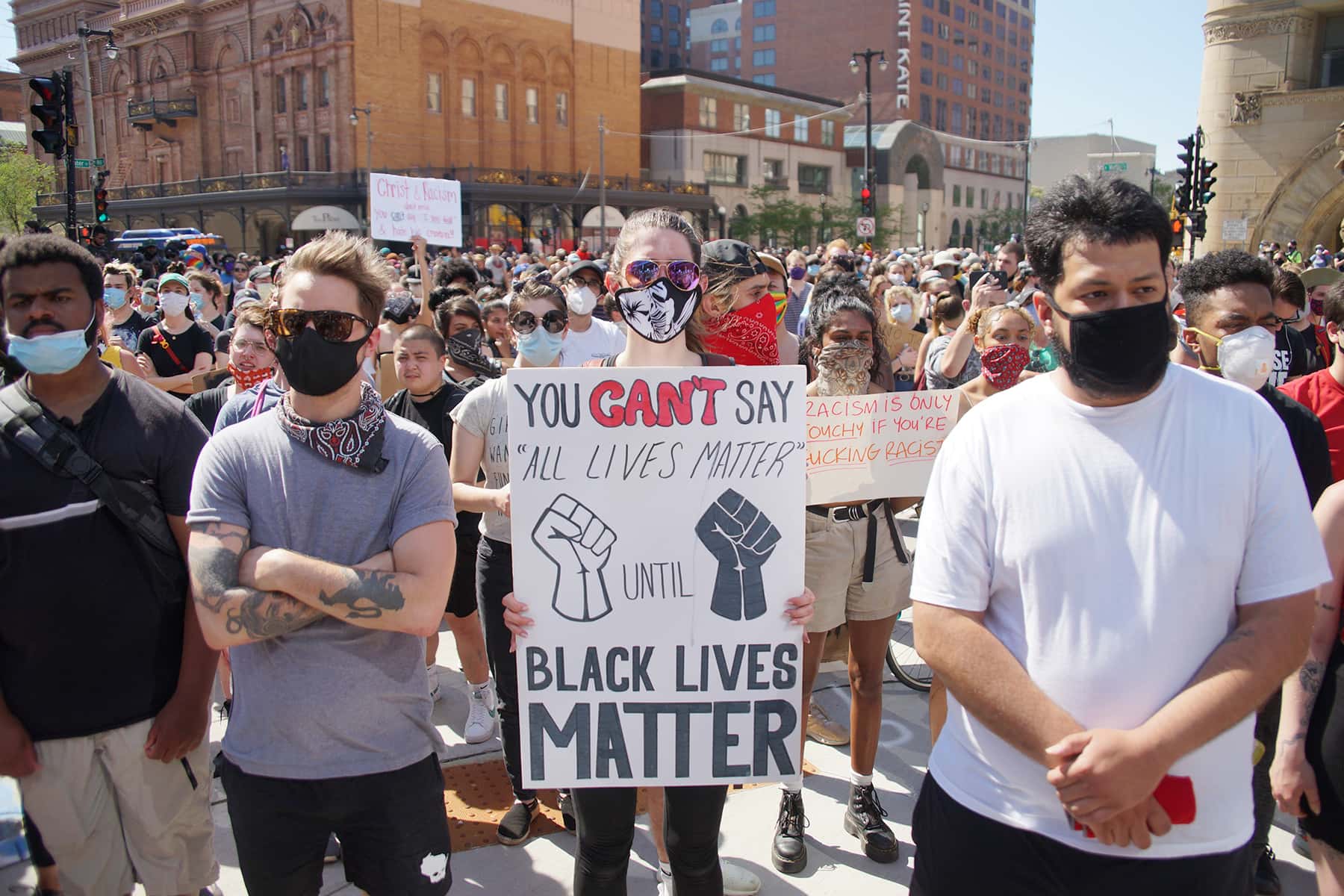
By Thomas A. Russo, Professor and Chief, Infectious Disease, Jacobs School of Medicine and Biomedical Sciences, University at Buffalo, The State University of New York
“WE ARE STILL IN A PANDEMIC,” Denver Black Lives Matter activist Tay Anderson shouted in capital letters on Twitter as he urged everyone who has protested police violence in recent days to join him in getting tested for the coronavirus.
Crowds of people, many maskless and yelling, can pose a health risk to one another in the middle of a pandemic. One of the greatest threats is that people may be spreading the disease before they know they have it. Protesters who may have been exposed to these “silent spreaders” then risk bringing it into their own homes and neighborhoods, putting their friends and families at risk if they don’t take precautions.
What can protesters do to protect themselves, their families and their community? Here are answers to that and other key questions about protesting during a pandemic, from the head of infectious diseases at Jacobs School of Medicine and Biomedical Sciences at the University at Buffalo.
The protests are outdoors. Doesn’t that lower the risk?
As a general rule, being outside is better than inside. That is because the larger air volume disperses the virus, and a larger space facilitates social distancing. But large protests create unusual circumstances:
- You have a large crowd of people who are in close quarters for a prolonged period.
- They are agitated and may be chanting or shouting, so they’re generating more respiratory secretions than if they were having a quiet conversation.
- From what we’re seeing, they might not have PPE, like masks and eye protection.
That combination is probably going to negate whatever advantages someone might get from being outside. This is also a scenario where we don’t know how many people might be infected in a given crowd. Your community might have a low infection rate, but if it is getting rabble-rousers from elsewhere, all bets are off.
If I don’t have symptoms, do I need to worry about infecting my family and friends?
This is part of the problem. You can feel Tony the Tiger “great!” and still be infectious. A person who has the coronavirus can be infectious up to six days before symptoms develop and up to at least nine days after, based on the limited data we have to date. That is a pretty big window.
We think the peak time for spreading the virus is two to three days before symptoms start and a few days after, but we are still learning about this virus. We do not even know the infectious dose – how much exposure is needed before a person becomes infected. Infected people may also never develop symptoms but still spread the disease.
What’s the risk of ‘superspreaders’ at protests?
In large gatherings, there is certainly a big risk that one person could infect a large number of people. Normally, someone with COVID-19 is estimated to infect between two and six unprotected, susceptible people. But there are people called superspreaders who have infected dozens. One question is whether any person could become a superspreader if they are at the right point in their infection, when they have the maximum viral load and they’re coughing or shouting in close quarters with other people.
We saw the harm a superspreader can do when an asymptomatic person attended a choir practice in Skagit County, Washington. Fifty-two of the 61 choir members there that day developed either confirmed or probable cases of COVID-19. Two people died. The choir members had sung together for 2.5 hours. There is always the risk a single person has the potential, put in the right circumstances, to infect large numbers of others – like at a protest.
Can shouting spread the virus farther?
We know that just talking can spread enough of the virus to infect someone nearby. Exertion and shouting further increase the generation of respiratory secretions, and there’s typically a lot of that going on at protests. When people are shouting and getting agitated, they are often spitting. That is going to increase the likelihood of you getting infected. You also use more oxygen when you exert yourself, so you breathe more heavily and increase your air exchange to compensate. If your respiratory rate is up, that is going to increase your risk of inhaling infectious particles.
What can I do during the protest to stay safe?
Wear a mask and eye protection. Keep your distance from other people, too. Remember that there’s nothing magical about the 6-foot rule. You could be 10 feet away and still get a sufficient dose to be infected if you’re in the right place at the right time. Staying to the periphery and upwind of the protest can help, but it doesn’t guarantee safety. A change in crowd movement and wind direction can suddenly increase your risk. It is hard to protest in an absolutely safe fashion, but if everyone was wearing masks and eye protection, that would significantly decrease risk.
When I get home from a protest, what should I do to protect my family and friends?
Remember that even if you feel healthy, you could be spreading the virus. If you become infected, you will put everyone in your household and social circle at risk. Minnesota, the state where George Floyd died in police custody, is urging everyone who attended a protest to get tested. The Minnesota National Guard also plans to test all its members deployed in response to the protests after one tested positive for the coronavirus.
But while daily or intermittent testing will identify many people who become infected, access to testing may be limited. The safest way to protect loved ones is to immediately and religiously wear a mask for three weeks post-protest, given the incubation time and infectious window for this virus, if self-quarantining is not an option.

